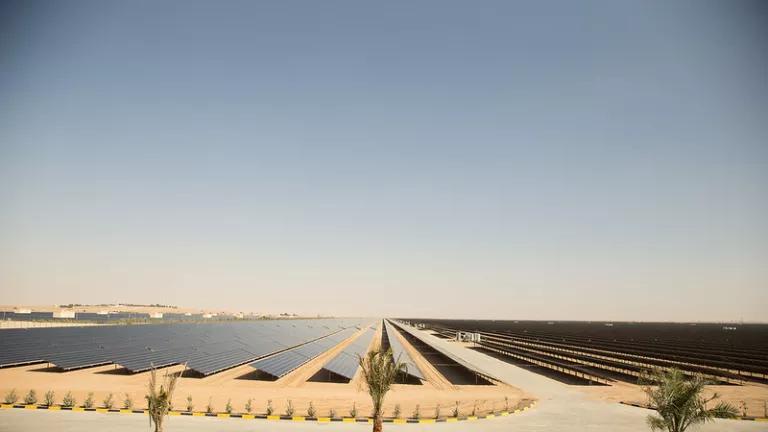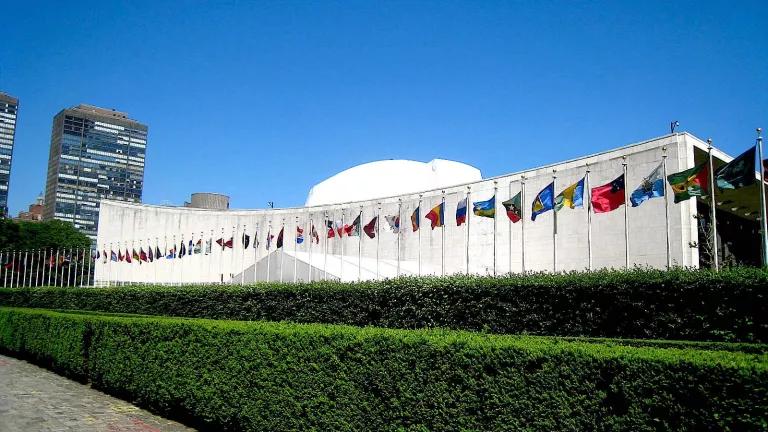We Can’t Solve the Climate Crisis Without Forest Protection
It's been a summer of catastrophic headlines about the world's forests—our best ally in the fight against climate change.

This has been a summer of truly catastrophic headlines about our world’s forests. From the blazes in the Amazon rainforest to Trump’s welcome mat for logging trucks in the Tongass National Forest, we are turning friendly fire on forests--our best natural allies in the fight against climate change. It is against this bleak backdrop that world leaders are meeting this week in New York for the United Nations Climate Action Summit. There, as countries discuss the race to rein in runaway greenhouse gas emissions and meet the goals of the 2015 Paris Agreement, the urgent need to curb and reverse the rapid loss of our forests—the lungs of our earth—must be front and center.
Forests have been keeping atmospheric carbon in check and either storing or replacing it with life-giving oxygen for millions of years. Yet, over the last two centuries, just as our fossil fuel use has exploded, we have eradicated a third of our forest cover and replaced biodiverse intact forests with pale imitations of the ecosystems they once were. This has hobbled our earth’s once-balanced respiratory system. Even when forests are replanted, it can take decades or even centuries for them to absorb carbon with their previous efficiency. And with just 11 years left to avoid blowing past the international goal of keeping warming below 2 degrees Celsius, there just isn’t any more time for banking on forests to regrow fast enough. Destroying intact forests also releases previously locked-up carbon into the atmosphere. Globally, forests store more than two times the carbon in all currently accessible coal, oil, and gas reserves. When they’re logged, this carbon becomes every bit as dangerous for our climate as burning fossil fuels.
Ending deforestation and restoring degraded forests is a critical piece to keeping temperature rise below 2 degrees Celsius. As NRDC highlighted in its Roadmap to a Safer Climate report Paris earlier this year, stopping forest loss and restoring forests where they used to be can reduce carbon emissions by about 2.5 gigatons per year—about the same impact as eliminating fossil fuel subsidies. This isn’t an alternative to ending our reliance on fossil fuels, but it is a necessary piece of solving the climate crisis.
The international community, from governments to corporations, has made a number of commitments on forest protection. One of the outcomes of last year’s meeting of the UN Framework Convention on Climate Change (UNFCCC) was the Katowice Declaration on Forests for the Climate, in which the 81 signatories pledged to accelerate action on supporting forests’ contributions to addressing the climate crisis. Back in 2014, governments, companies, Indigenous communities, and NGOs signed on to the New York Declaration on Forests, which aspires to halve deforestation by 2020 and end it by 2030.
But despite these lofty promises and the IPCC’s warnings late last year of our limited time to prevent catastrophic climate change, we have been failing on protecting our forests. In Greta Thunberg’s speech to the United Nations today, she lamented the decades of “empty words” that have led us to the crisis we have today. We’re hearing the trees fall in the forest, but still standing idly by. A recent assessment found that forest loss has risen 40 percent since the NY Declaration was signed five years ago. At this point, meeting the Declaration’s 2020 goal is likely impossible. The actions that have been taken, according to the report are “inadequate to catalyze a systemic shift in behavior.” And the problem isn’t just confined to one country or region—it’s happening around the world.
In the Amazon, deforestation this June was 88 percent higher than in June of last year. The far-right president of Brazil, Jair Bolsonaro, has emboldened illegal deforestation, including in the form of cataclysmic fires to clear the way for cattle farms. Bolsonaro has dismantled environmental protection agencies and put forward an agenda of unrestricted development, crippling the enforcement of existing environmental laws and pushing the Amazon even closer toward a tipping point.
Meanwhile, in the United States, the Trump Administration has threatened similarly devastating impacts. Over the summer, Trump proposed a rule that would severely curtail the National Environmental Protection Act’s regulations of forest management, including permitting commercial logging and creating new roads. Trump also is also seeking to allow logging in the Tongass National Forest, the country’s largest national forest and home to the world’s largest concentration of bald eagles.
In the Canadian boreal forest, the world’s largest remaining intact forest and a storehouse for 12 percent of the world’s terrestrial carbon, clearcutting continues at a rate of a million acres every year. While at the federal level Canada has invested in Indigenous-led forest protection, 2019 has seen even more rollbacks for species habitat protection in Ontario, further delays in protection in Quebec, and continued failure to adequately account for logging’s carbon footprint. Ironically, companies like Procter & Gamble that signed on to the New York Declaration on Forests are helping drive this destruction in the boreal. Procter & Gamble, the company behind Charmin and Puffs, continues to make throwaway tissue products from boreal trees rather than more sustainable recycled content or alternative materials.
Where there has been good news, it has largely come from the leadership of Indigenous Peoples. Studies have shown that, where Indigenous land rights are strong, forest biodiversity and carbon are better protected. And this has played out this year from the tropics to the boreal. In Brazil, Indigenous leaders have organized against Bolsonaro, and many hope that the increased international attention from the fires will call attention to their decades of struggles for land rights and protection of their territories. In Canada, Indigenous Peoples have been leading the charge on establishing new protected areas and stewarding the forest. From the long-awaited creation of Thaidene Nene National Park Reserve to the expansion of Indigenous Guardians programs, Indigenous leadership has been at the forefront of protecting the carbon-rich boreal forest.
2019 has been full of setbacks and paralyzingly devastating news for forests. But complacency is not an option. With another year quickly ticking away without meaningful reductions in greenhouse gas emissions, we have to follow the leadership of Indigenous Peoples around the world and stop destroying our remaining intact forests. From the icy tundras to the arid deserts, the future of all our ecosystems and people around the world depends on what happens to the lungs of our earth. It’s time to start acting like it.






